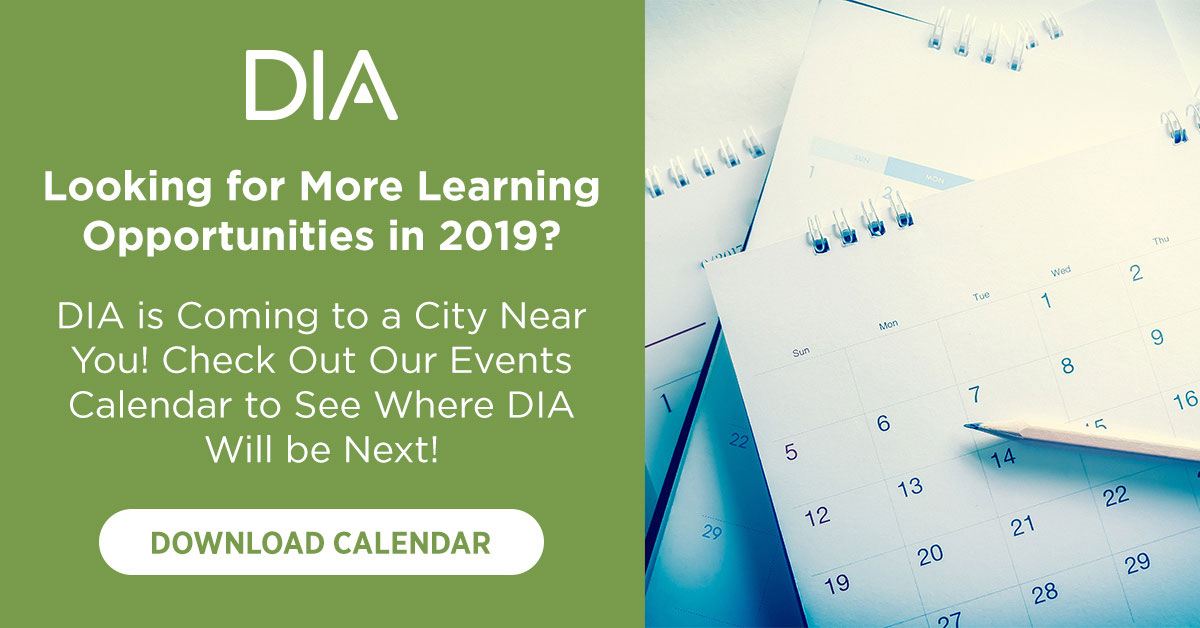May 2019 Global Forum
Table of Contents
Around The Globe
AROUND THE GLOBE CONTINUED
COMMUNITY SPOTLIGHT
Engage, Inform, and Grow
YOUNG PROFESSIONALS’ CORNER
EXECUTIVE LEADERSHIP
Subscribe
Love Global Forum‘s new online format? Subscribe today and never miss an issue.
Editorial Board
Content stream editors
Gary Kelloff US National Institutes of Health
David Parkinson ESSA Pharma, Inc.
regulatory science
Yoshiaki Uyama Pharmaceuticals and Medical Devices Agency (PMDA)
Adora Ndu BioMarin Pharmaceutical, Inc.
Patient engagement
Deborah Collyar Patient Advocates In Research (PAIR)
Lode Dewulf Servier
Value & access
Edith Frénoy European Federation of Pharmaceutical Industries and Associations (EFPIA)
Editorial Staff
Alberto Grignolo, Editor-in-Chief PAREXEL International
Ranjini Prithviraj, Global Associate Director, Content Collaboration DIA Publications
Sandra Blumenrath, Science Writer DIA Publications
Chris M. Slawecki, Senior Digital Copyeditor DIA Publications
Regional Editors
AFRICA
David Mukanga Bill and Melinda Gates Foundation
ASEAN
Silke Vogel Duke-National University of Singapore Medical School
AUSTRALIA/NEW ZEALAND
Richard Day University of New South Wales, Medicine, St. Vincent’s Hospital
CANADA
Judith Glennie JL Glennie Consulting, Inc.
Megan Bettle Health Canada
CHINA
Ling Su Shenyang Pharmaceutical University, Lilly Asia Ventures
Europe
Thomas Kühler Sanofi R&D
INDIA
J. Vijay Venkatraman Oviya MedSafe
JAPAN
Kazuhiro Kanmuri Inter-Professional, Inc.
USA
Ebony Dashiell-Aje FDA
Young Professionals Editor
DIA Membership
Bringing together stakeholders for the betterment of global health care.
his month’s Global Forum includes two seminal articles on the importance of biomarkers in improving cancer drug development efficiency and improving the treatment of cancer patients.
The first article by Drs. Wong, Siah, and Lo, provides a comprehensive review of cancer drug development in 40 cancer target organs evaluated in a very large number of cancer drug development programs since the year 2000 and the importance that biomarker science has played in improving the efficiency of drug development.
The second article by Dr. Bruce Johnson discusses the tangible success in improving the treatment of patients with non-small cell lung cancer by detection of molecular lesions, the use of molecular targeted therapies, and the more recent use of immune checkpoint inhibitors.
Both articles document the progress and illustrate the promise of translational science and personalized medicine for intervention in cancer. Thank you for reading.
MIT Computer Science & Artificial Intelligence Laboratory
Department of Electrical Engineering & Computer Science
@MIT_CSAIL MIT Sloan School of Management & Laboratory for Financial Engineering
illions of dollars are spent annually on cancer drug development, yet effective treatments for many types of cancer remain as elusive as ever. Recently, the MIT Laboratory for Financial Engineering announced the launch of Project ALPHA (Analytics for Life-sciences Professionals and Healthcare Advocates), a large-scale estimation of clinical trial probabilities of success (PoS) for a variety of drug development programs, where a single program is defined as the set of all clinical trials corresponding to a unique drug-indication pair. In that study, we found that only 3.4 percent of all cancer drug development programs from 2000 to 2015 moved from phase 1 to regulatory approval, despite the fact that oncology accounted for 42 percent of all drug development programs in that dataset.
Chief Clinical Research Officer
Dana-Farber Cancer Institute
@DanaFarber
Professor of Medicine
Harvard Medical School
@harvardmed
he genomic and immunohistochemical characterization of non-small cell lung cancers (NSCLC) and the consequential development of effective targeted and immunotherapy has provided significant ongoing incremental progress in treatment of this deadly cancer. This article outlines this progress, confirming the value of biomarkers and the assays that measure them to facilitate drug development and make precision medicine a reality for nearly half of lung cancer patients.
Genomic Changes with FDA Approved Agents for Patients with Lung Cancer
End in Sight of Transitional Period of New EU Regulations for Medical and In Vitro Diagnostic Devices
Erik Vollebregt
Partner
Axon Lawyers
he new Medical Devices Regulation (MDR) and IVD Regulation (IVDR) entered into force on 25 May 2017, starting a three-year (MDR) and five-year (IVDR) transitional period.
Medical Device Safety Monitoring and Regulatory Reporting
Devices Come Under New Post-Market Scrutiny
David Gwyn
Global Solution Architect
AMPLEXOR Life Sciences
he pharmaceutical industry has long had to comply with the kinds of strict reporting standards and ongoing monitoring that will soon apply to medical device manufacturers. So what best practices have emerged that device manufacturers might now borrow from?
Medical device monitoring and reporting is about to experience a big shake-up. The PIP breast implant scandal is just one of a series of high-profile cases which have led to calls for closer post-market tracking and reporting rigor. It all feels very reminiscent of measures first applied to the human pharmaceutical industry some 14 years ago–as authorities around the world sought to enforce stricter safety controls.
Since then, drugs companies have come a long way, culminating in their current preparations for ISO IDMP requirements. So what can device manufacturers learn from their journey?
Tipping Point in Clinical Research
Roslyn Schneider
Pharmaceutical Physician
Former Head of Global Patient Affairs
Pfizer, Inc.
@Roslyndoc
Richard Stephens
Former Chair, NCRI Consumer Forum
Joint Editor-in-Chief
Journal of Research Involvement and Engagement
Tony Hoos
Pharmaceutical Physician
Former Head of Medical
Amgen Europe
Lode Dewulf
Chief Patient Officer
Servier
@LodeDewulf
n the past, numerous objections were raised to working with patients in designing and implementing clinical trials: not relevant, not scientifically valid, not allowed, not efficient, not cost effective, and so forth. One by one, these objections have proven to be myths. In fact, all accumulating (real world) evidence points to the opposite: When done well, working with patients in clinical trials is relevant, scientifically valid, allowed, efficient, and cost effective.
Patients bring a unique and needed expertise that complements and enhances (not replaces) expertise offered by science and medicine. Experience-based patient expertise offers value to several dimensions of clinical research:
- Studies co-designed with patients recruit better and faster because they are more relevant, more understandable, and easier/better to participate in.
- Studies which inform and support participating patients throughout, have fewer drop-outs; missing data (i.e., study drop-outs) remains the biggest scientific challenge to any clinical data set.
- Investments in working with patients (in staff, time, and money) while designing protocols yields exponential returns (e.g., the NPV and ENPV increases can exceed 500-fold the investment, as this study found).
- Similar to requiring ethics approval of the protocol and all participants’ informed consent, patient involvement is becoming a requirement for study funding and publication (e.g., British Medical Journal submissions, Patient Centered Outcomes Institute funding, and UK National Institute of Health Research funding).
- Last but not least, health authorities increasingly recognize that patients are needed as experts (e.g., see recent FDA and EMA statements).
Any clinical research sponsor ignoring these new realities will pay the price of lower likelihood of health authority approval, limited payer/HTA approval, subsequently creating limited access and thus lower appeal to potential investors.
Around the Globe
Senior Associate Dean, Graduate Studies; Deputy Director
Centre of Regulatory Excellence, Duke-NUS Medical School
@dukeNUS
s of mid-February, leading up to the Brexit deadline on 29 March 2019, the outlook for the exit of the United Kingdom (UK) from the European Union (EU) has been largely viewed with great uncertainty. The UK Parliament’s rejection of the Prime Minister’s Brexit deal twice within two months before the deadline significantly increased the likelihood of a “no-deal” Brexit, casting even greater doubt and anxiety among people and businesses in UK and EU. Outside of Europe, stakeholders in Asia-Pacific are no less concerned about the potential rippling effects for the region, which would be even more difficult to predict.
![]() Podcasts
Podcasts
Around the Globe
Advancing Health in Asia Through Innovation
Senior Associate Dean, Graduate Studies; Deputy Director
Centre of Regulatory Excellence, Duke-NUS Medical School
@dukeNUS
orldwide demand for healthcare is rising rapidly and innovators are responding with vigor to meet patients’ needs. In a highly diverse region such as Asia where the political, socioeconomical, and environmental contexts vary across countries, the added complexity from the evolving healthcare needs and emerging trends in the region inevitably presents challenges but also opportunities for healthcare stakeholders. Within the increasingly complex healthcare ecosystem in Asia, how are stakeholders contributing to the drive for health innovation while also enabling patients’ access to these innovations?
Key Takeaways
- To meet rising healthcare demands in Asia, health innovations are advancing rapidly across the pharmaceutical, biopharmaceutical, and medical devices sectors, in particular through the emergence of digital health across the board.
- Digital health aims to transform healthcare by optimizing clinical and operational effectiveness, increasing patient engagement, empowering patients for self-care, and boosting clinical research. Combining digital tools with advanced data analytics creates further potential to enable a well-informed, data-driven healthcare system.
- Asian regulators and regulatory affairs professionals are making great efforts to keep abreast of innovations and facilitate the access of patients to these innovations by advancing regulatory science, employing risk-based approaches to regulation, and promoting multi-stakeholder collaboration.
Around the Globe
ustralians go to the polls in May this year and a change of government from the Conservative Coalition to the Labor party appears quite likely. This means Australia might have a new Prime Minister: Bill Shorten, head of the Labor Party. If elected, he will be Australia’s eighth Prime Minister in the last 12 years! Labor’s current “shadow” Health Minister, Catherine King, has foreshadowed a radical departure from our national health arrangements.
However, Australia’s health system, generally considered to be effective in world terms, is hampered by two significant problems. First, there is a division of responsibility for components of the sector between the Federal government (e.g., primary health services) and our Six States and two Territories governments (e.g., public hospitals). Second, the ultimate responsibility for operation of the health system is under the control of the Commonwealth and State and Territory parliaments.
Around the Globe
Regulatory and Health System Approaches
Health Canada
iologic drugs account for a large proportion of Canadian drug spending. As in many other countries, the development of a robust biosimilars market is looked at by Canadian drug payers as one way to support healthcare budget sustainability. However, a recent study reports that uptake of biosimilars in Canada is relatively low compared to other countries in the Organization for Economic Cooperation and Development (OECD).
- A suitable reference biologic drug exists that (a) was originally authorized for sale based on a full quality, non-clinical and clinical data package; and (b) has been used in the post-market setting such that the demonstration of similarity will bring into relevance a substantial body of reliable data on safety, efficacy, and effectiveness.
- The biosimilar and reference biologic drug can be well-characterized by a set of modern analytical methods.
- The biosimilar, through extensive characterization and analysis, can be judged similar to the reference biologic drug by meeting an appropriate set of pre-determined criteria.
Around the Globe
Rare Disease Drug Accessibility and Social Medical Coverage in China
President and Founder
Chinese Organization for Rare Disorders
he official “First List of Rare Diseases” was released jointly by five government agencies in May 2018.
One hundred and twenty-one rare diseases are included in this list. It is a huge milestone in the developing history of China’s rare diseases, signifying the government’s determination to address the accessibility of drugs for rare diseases.![]() Podcasts
Podcasts
Around The Globe
EMA on Regulatory Science to 2025
Cooperation, Integration, Evidence, Access
Head, Regulatory Science & Policy, EU/AMESA
Sanofi R&D
n January 2019, the European Medicines Agency (EMA) published the Regulatory Science to 2025: strategic reflection paper for public consultation. It comprises sections on both human and veterinary medicines and discusses the importance of international regulatory science cooperation. In this reflection paper, EMA stresses the need to foster closer integration of science and technology in medicines development and to establish improved evidence generation paradigms to support different stakeholders involved in the assessment and decision-making of new medicines. It also underscores measures to secure patient access to medicines and debates the readiness of the European regulatory system to adequately respond to emerging health threats.
The reflection paper will serve as an important cornerstone to keep the European regulatory system competitive and flexible to change. However, there are couple of areas where, I believe, it could have been more explicit or progressive.
Community Spotlight
Engage, Inform, and Grow
CSP Community Chair
President
Golden Gate Compliance, LLC
he DIA Clinical Safety and Pharmacovigilance Community offers a collaborative environment in which to promote industry best practices, generate new ideas, and discuss the impacts of the changing regulatory environment as it relates to Clinical Safety and Pharmacovigilance (CSP). Our efforts are intended to enhance the practice of monitoring the safety of drugs, biologics, and devices in the interest of public health.
The CSP Community recently welcomed Karen Ward as its new Chair, following Catherine Baldridge. Under Catherine’s leadership, the Community advanced its goals of establishing a core leadership team, increasing membership, and providing educational opportunities to its members. Over the past year, the Committee hosted training sessions on MHRA PV Inspections, Local Literature Monitoring, Local Qualified Person for Pharmacovigilance (QPPV), Signal Detection, Risk Evaluation and Mitigation Strategies (REMS), and the Pharmacovigilance System Master File (PSMF). Catherine will remain an active part of the Community focusing on Member Engagement as a leader on the CSP Core Team.
Community Spotlight
The Contents Committee of DIA Japan
Atsushi Tsukamoto
Vice President
New Regulatory Affairs
Daiichi Sankyo Co., Ltd.
n Japan, emerging science and technology have significantly contributed to improving the life sciences, especially to curing disease. The government of Japan works together with academia to promote the new and innovative technologies that result in innovative therapies for patients in Japan. To fully evaluate the safety and efficacy of these innovative products for their target patient population, both regulatory and industry professionals must stay abreast of the most recent advancements in science and technology.
Young Professionals’ Corner
Tracey Li
US Oncology Medical Affairs Post-Doctoral Fellow
Pfizer, Inc.
icture this: You are busy working on a project with a looming deadline and unexpectedly an eMail alert pops up from your boss. The eMail is an urgent request to complete another time-consuming project that is now higher priority. Competing workstreams, tight deadlines and an ever-growing to-do list are all ingredients in a recipe for stress.
Does this sound familiar?
As I reflect on my own career, there have been many moments where I have encountered stressful situations which leave me wondering, “Can stress be a productive element? How does one counter stress? And what are some outlets for stress relief?”










